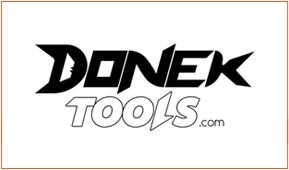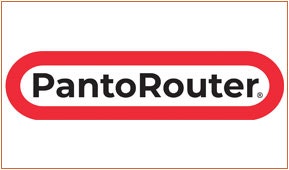Router vs. Shaper: Cousins with Different Functions
Often enough many small shops have to make do with the space they have. When it comes to balance space, time, and money, many times the shaper becomes victim of being left out.
First, let's make something clear, most functions of a shaper can be replaced with a router used inverted in a table. Second, there really is no replacement for a shaper when it comes to certain functions. Third, a router also has many functions a shaper does not, there is a limit in what a shaper can do and how long it can work continuously.
Let's look closer into the advantages and disadvantages of both the shaper and router.
Advantage of a Router and Router Bits:
Cost - As compared to a shaper the total cost of a plunge router, a lift, table top, fence, work hold-down, can add up to over MKD46,900.00. Replacement bits can cost from MKD1,200.00 up.
The cost of a shaper can cost as little at MKD20,500.00 and as high as MKD292,900.00. The cost of shaper cutters can cost from MKD11,800.00 or more. Of course the reliability and accuracy of a Shaper that costs of MKD20,500.00 is nothing to write home about.
So for arguments sake, let's compare mid-level costs from both sides, you can see that the costs of a router are much lower than that of a shaper.
Tooling - Router bits are much smaller in diameter. This enables one to be able to work on smaller and more delicate work pieces. Being that the diameter of router bits is much smaller than shaper cutters, the revolutions per second is much higher. This enables the cutter to have more contact with the wood creating a much cleaner cut.
Versatility - The router was described as "the most versatile tool in the world" by Jeremy Broun in his book, The Incredible Router. Not only can it be used for so many areas of work but it can be transported easily to work done outside the shop. Additionally, there seems to be an amount of profile cuts which can be made using, what it seems to be, an infinite number of different router bits.
Some Router Bit Profiles:
Advantages of a Shaper and Shaper Cutters:
Adaptability - Most shapers will accept router bits with the use of an adapter. Being that most shops cannot run without a router, one who does have a shaper in his/her shop will certainly have a collection of router bits. Router bits can be used with most shapers.
Tooling - A shaper is essentially a much more powerful router. Because of its greater power, shaper cutters can be more complex in its profile cutter. The great advantage of using such a cutter is that one can machine a complex profile with one pass as opposed to three-plus with a router. Shaper cutters can also cut much wider profiles such as those in raised panels and crown moldings .
Reverse - If you ever had issues with your wood splitting out because of grain direction, a shaper has made your work easier by being able to run in reverse. Routers are not set up with this function.
Cost Savings - We learned above the difference in cost between a router and a shaper. There is no comparison which one is more affordable. But as anyone in a shop knows, time is money. When one can set up the shaper to pass stock through once, as opposed to three plus times (not to mention the set up time), a large amount of time can be saved.
Heavy machining - A shaper is designed for larger volume work while a router is a hand tool for lighter duty work. As we were all taught by our elementary school woodshop teacher, let the tools do the work. When we feel that the tool is being pushed to its limit, it becomes not only bad for the final product, but also a danger. When doing heavy work, quality of work and safety is much better with a shaper.
Noise - Shapers tend to be much quieter than a router. Additionally, they are much sturdier and have much less vibrations than the shaper. This is because a shaper belt is driven and has slower speeds.
Some Shaper cutter profiles:
Summary:
In the end a shaper and a router have similar functions as well as many different capabilities. To determine which one best suit your needs you must ask yourself; what task do you need it to perform? Is the work piece and cut delicate? Do you need a long and deep cut? Do you need a precise clean finish? Do you need to run the machine all day? Do you need to make a complex cut?
These questions are important to determine which machine to use because at the end of the day although cost of purchase and work space is important, your finished product and profitability is much more important. You could have all the space in the world for a shop but you do need to use the right tools for the right jobs so your finished work will be at the highest level you could achieve.
Side note: Make sure your knives, blades and bits are always sharp. The greatest machine with dull blades will not create the finish you desire. With that being said, with the price of router bits and shaper blades being at a reasonable level, it is recommended to always have new, sharp, router bits and shaper cutters available.

















